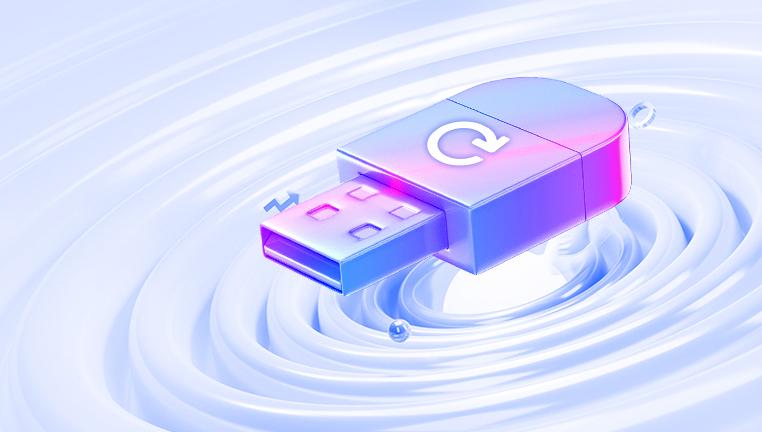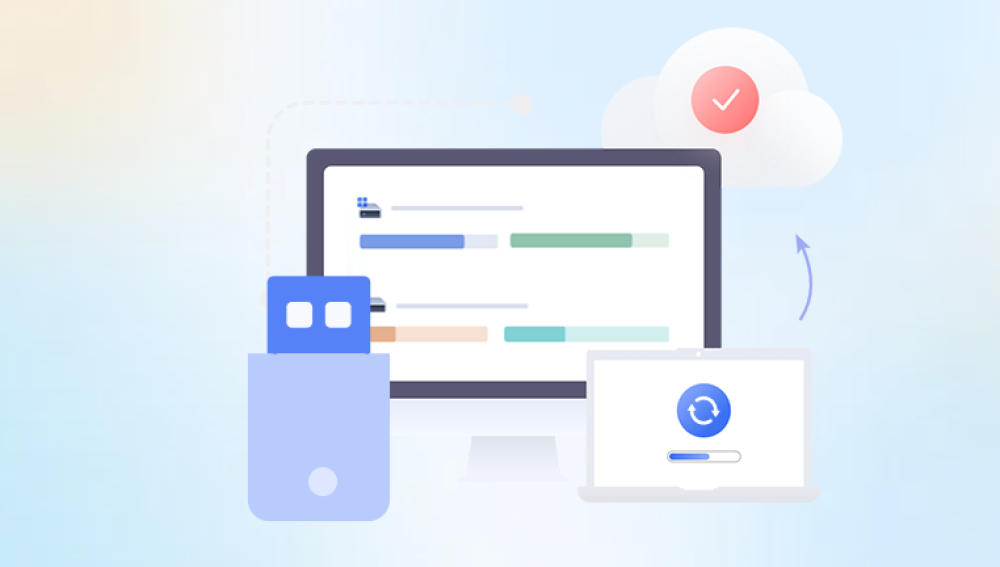Recovering Deleted Files from a USB Drive: A Comprehensive Guide
Data loss can happen unexpectedly, whether due to accidental deletion, corruption, or other issues. USB drives are common storage devices, but they are also vulnerable to data loss.
1. How Deleted Files Are Handled on a USB Drive
Before diving into the recovery process, it’s important to understand how deleted files are handled on a USB drive.
When you delete a file from a USB drive, it isn’t immediately erased from the storage medium. Instead, the space that the file occupied is marked as “available” for new data. The file itself remains on the drive until it is overwritten by new data. This is why data recovery is possible even after you’ve deleted a file, as long as the space hasn’t been overwritten.

However, the likelihood of successful recovery decreases if new files have been written to the drive after the deletion. This is why it’s essential to stop using the USB drive as soon as you realize that important files have been deleted.
2. Initial Steps Before Attempting Recovery
If you’ve realized that important files have been deleted from your USB drive, follow these initial steps:
2.1 Stop Using the USB Drive
As mentioned, the more you use the USB drive after data deletion, the higher the chance that the deleted files will be overwritten. This can make recovery much harder or even impossible. Immediately stop using the drive to maximize your chances of recovering the deleted files.
2.2 Check the Recycle Bin (Windows) or Trash (Mac)
Sometimes, files that are deleted from a USB drive might end up in the Recycle Bin (on Windows) or Trash (on Mac), especially if you deleted them via the desktop interface. Check these locations to see if your deleted files are there.
2.3 Do Not Format the USB Drive
If you’ve accidentally formatted your USB drive, you might still be able to recover your files. However, if you’ve formatted it intentionally to clear the drive or fix issues, be aware that formatting can make recovery more difficult, but not necessarily impossible. Avoid reformatting the drive if you plan to recover the data.
3. Methods for Recovering Deleted Files from a USB Drive
Now, let’s dive into the different methods you can use to recover your deleted files. The method you choose will depend on the severity of the data loss and the available tools.
3.1 Use Data Recovery Software
Data recovery software is one of the most effective ways to retrieve deleted files from a USB drive. These tools scan your drive for deleted files and attempt to recover them by reading sectors that still contain the data. Below are some popular data recovery software options:
3.1.1 Drecov Data Recovery
Drecov Data Recovery is a user-friendly tool that supports USB drives and other storage devices. It scans your drive for deleted files and allows you to preview recoverable files before restoring them. Here’s how to use it:
Download and Install Drecov Data Recovery: First, download and install Drecov Data Recovery on your computer. Make sure not to install it on the same USB drive that you want to recover files from.
Select the USB Drive: Once the software is installed, open it and select the USB drive from the list of available storage devices.
Start the Scan: Choose the type of scan you want to run—quick or deep. A quick scan is faster but less thorough, while a deep scan takes longer but scans the drive more thoroughly for recoverable files.
Preview and Recover Files: After the scan, Drecov Data Recovery will show you a list of recoverable files. Preview the files and select the ones you want to recover. Then, save them to a different drive to avoid overwriting any remaining recoverable data on the USB drive.
3.2 Recover Files Using Windows Built-in Tools
Windows provides some built-in options for file recovery, but these methods work best if you’ve accidentally deleted files and haven’t overwritten them.
3.2.1 Previous Versions (Windows Only)
Windows automatically creates restore points, which can sometimes include previous versions of files. If your USB drive was being used on a Windows computer and you have enabled the "File History" or "System Restore" options, you may be able to restore a previous version of the file or folder. Here’s how:
Right-Click the Folder: Navigate to the folder where your deleted files were located on the USB drive. Right-click on the folder and select "Restore previous versions."
Select a Version: If there are any available previous versions of the folder or files, you can select them and click "Restore."
3.3 Recover Files Using Mac’s Time Machine (Mac Users Only)
If you’ve used your USB drive with a Mac, and you have Time Machine backups set up, you can restore deleted files from a backup.
Open Time Machine: Connect your USB drive to the Mac and open the Time Machine app.
Navigate to the File or Folder: Browse through the backup timeline to find the deleted files you want to recover.
Restore the Files: Select the files and click "Restore" to recover them to your USB drive.
4. Preventing Data Loss on Your USB Drive
While data recovery is possible, it’s always better to avoid data loss in the first place. Here are some tips for preventing future data loss on your USB drive:
4.1 Regular Backups
Always back up important files regularly. Use cloud storage services like Google Drive or Dropbox, or create copies of your files on external hard drives. This ensures that even if your USB drive fails or you accidentally delete files, you have a copy.
4.2 Eject Your USB Drive Safely
Always eject your USB drive properly before removing it from your computer. Unplugging it without safely ejecting it can result in file corruption or data loss.
4.3 Use Write Protection
Some USB drives come with a write protection feature, which prevents data from being modified or deleted. If your USB drive supports this, consider enabling it to prevent accidental deletion of files.
4.4 Use Reputable Software
When deleting or formatting files, use reputable file management software to avoid errors. Third-party tools can sometimes cause data loss if not used correctly.
5. When to Seek Professional Help
In some cases, recovery software may not be enough to recover your deleted files, especially if the USB drive has suffered physical damage or the data is severely corrupted. If your attempts at recovery fail, it may be time to seek professional data recovery services. These services specialize in recovering data from damaged or corrupted drives, and they have specialized equipment to handle more complex recovery situations.




